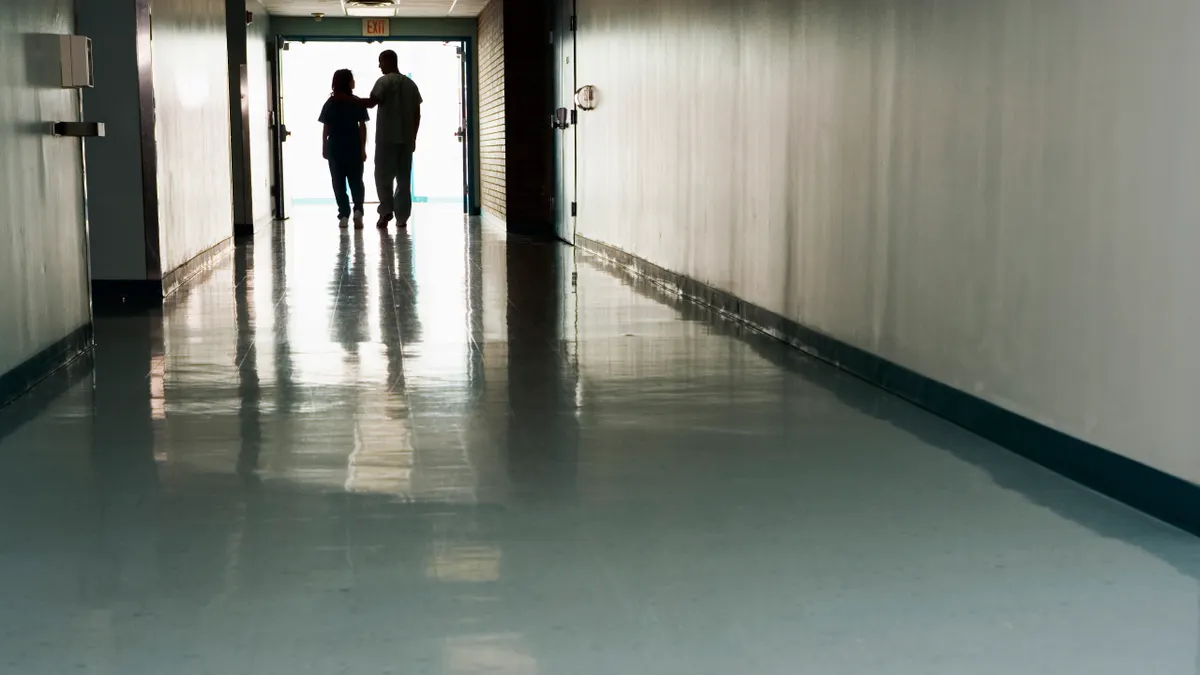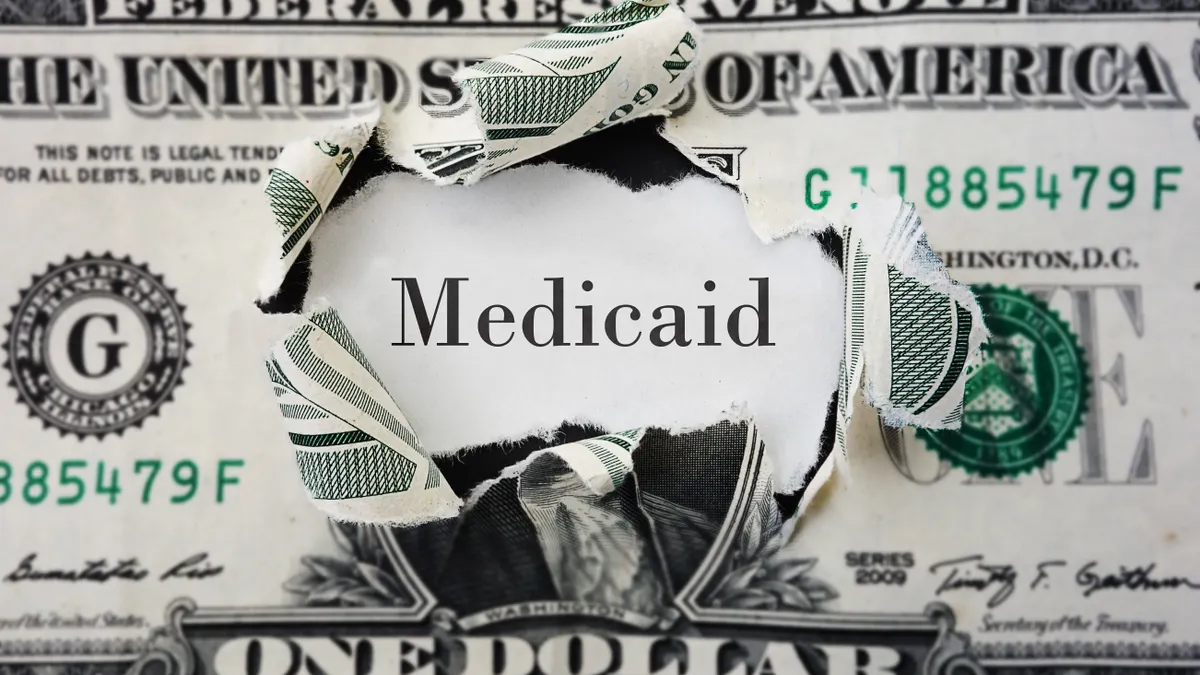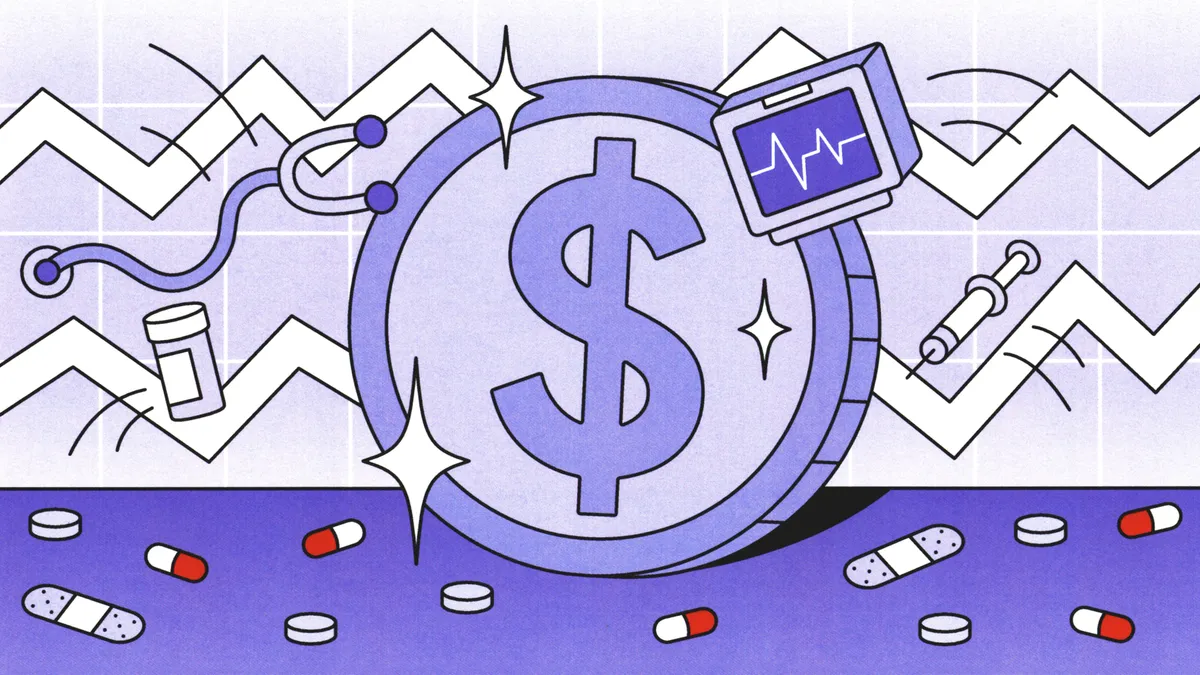The CMS finalized a regulation Friday that includes a small bump in Medicare reimbursement for outpatient services next year, as well as policies to implement site-neutral payments and increase price transparency.
The agency will increase pay for outpatient care by 2.6% in 2026, including a 3.3% hospital market basket bump reduced by a 0.7 percentage point productivity adjustment. That’s slightly higher than the 2.4% initially proposed by the CMS this summer.
The rule also includes changes that require hospitals to post more information about their prices in a bid to improve cost transparency for patients. Plus, it moves to expand new site-neutral policies, where hospital outpatient departments are paid at the same level as physician offices.
“We continue to advance Medicare payment reform by advancing policies that help prevent services from unnecessarily being performed in hospitals when they can be safely provided in less intensive settings, streamlining hospital billing systems, and ensuring patients receive transparent, accurate pricing information,” Chris Klomp, CMS deputy administrator and director of the Center for Medicare, said in a statement.
Hospital groups slammed the final payment rule as inadequate, arguing the sector is facing significant financial pressures like inflation and workforce shortages.
The healthcare sector also noted they have less time than usual to comply with the rule. The regulation was delayed, after a funding impasse centered on Affordable Care Act subsidies shut down the federal government for about six weeks. Last year’s outpatient payment rule came out on Nov. 1.
“With implementation timelines now severely compressed, hospitals have little time to understand finalized changes, adjust systems, update billing processes, revise budgets and train staff,” Soumi Saha, senior vice president of government affairs at healthcare services firm Premier, said in a Friday statement. “This last-minute scramble creates operational chaos and increases administrative burden, making it harder for hospitals to focus on what matters most: delivering high-quality care for patients.”
Site-neutral policies, inpatient only list
Hospital outpatient departments currently receive higher reimbursement for providing the same services compared with freestanding physician offices and ambulatory surgery centers — a policy critics say drives up costs for patients and Medicare.
In the latest payment rule, the CMS finalized a regulation that would reimburse off-campus outpatient departments owned by hospitals at the same rates as physician offices for drug administration services.
That change should cut outpatient spending by $290 million in 2026, with $220 million of the savings going to Medicare and $70 accruing to beneficiaries, according to the CMS.
Additionally, the agency is moving to phase out the inpatient only list, a list of which surgical procedures have to be furnished in hospitals, over three years. The CMS will start with removing 285 mostly musculoskeletal procedures next year.
The American Hospital Association lambasted the site-neutral policy changes, arguing they ignore the differences between care delivery at hospital outpatient departments and other care sites.
“The reality is that hospital outpatient departments serve Medicare patients who are sicker, more clinically complex, and more often disabled or residing in rural or low-income areas than the patients seen in independent physician offices,” Ashley Thompson, senior vice president of public policy analysis and development at the AHA, said in a statement.
Price transparency
The regulation will also require hospitals to post real price information, not estimates, for patients.
The CMS has tried for years to require hospitals to post publicly available information about their prices, but research has found many hospitals haven’t complied with past price transparency requirements.
Hospitals will be required to post prices in a standardized format so patients can see what their care will cost. They will have to post the median allowed amount for a service, as well as the 10th and 90th percentile allowed amounts, in a machine-readable format.
The rule will go into effect Jan. 1, but the CMS will delay enforcement of the changes until April 1.
340B
The CMS is backing off a plan that would have accelerated a clawback of funds in the 340B drug discount program, where drugmakers are required to give providers that serve a large number of low-income patients a discount on outpatient drugs.
After the Supreme Court found a policy change from the first Trump administration that lowered the reimbursement for drugs in the program was illegal, the CMS had to send $9 billion in lump-sum payments to affected hospitals. However, the agency also estimated hospitals were paid $7.8 billion more for non-drug services during that time.
To ensure the fix was budget neutral, the CMS finalized a 0.5% reduction in the conversion factor for non-drug items and services for all hospitals until the regulator reached the $7.8 billion threshold. The CMS estimated that would happen in 2041.
But in a proposed rule this summer, the CMS decided to shorten that timeframe, bumping the reduction to 2% starting next year. Hospitals decried the proposal, arguing it punishes providers for the CMS’ error.
In response to feedback, the CMS said Friday it wouldn’t change the 340B clawback at this time from 0.5%. However, the regulator said it anticipated finalizing a larger reduction beginning in 2027.
“We are grateful that the agency accepted our position that an accelerated 340B remedy recoupment would harm hospitals that relied on the previous timeline,” the AHA’s Thompson said in a statement. “However, we are concerned that it intends to move forward with an accelerated timeline next year. An accelerated timeline, either now or in the future, is both bad policy and unlawful.”
Hospital star ratings
The CMS also finalized a policy that would ensure hospitals that perform in the lowest quartile in safety metrics wouldn’t be able to receive a 5-star rating in hospital quality measurements. And, starting in 2027, hospitals that earn safety scores in the lowest quartile will automatically receive a 1-star downgrade.
Additionally, the CMS will update quality reporting requirements to remove some “burdensome” health equity and COVID-19 vaccine metrics, and adopt a new measure that evaluates wait times in emergency departments.























